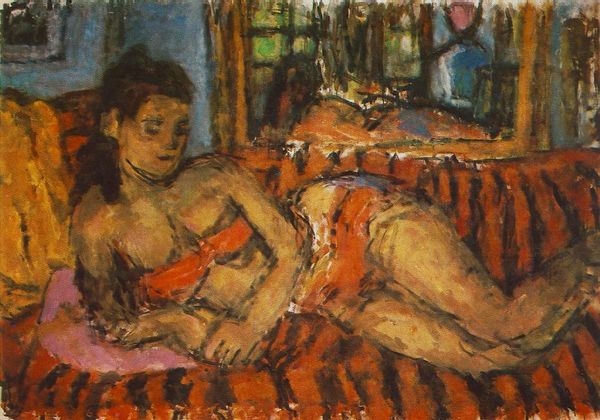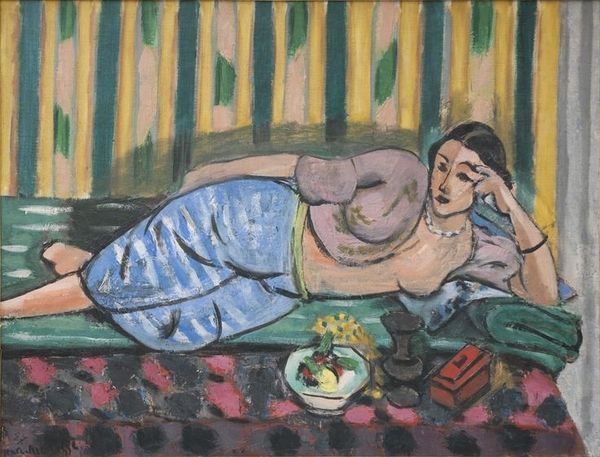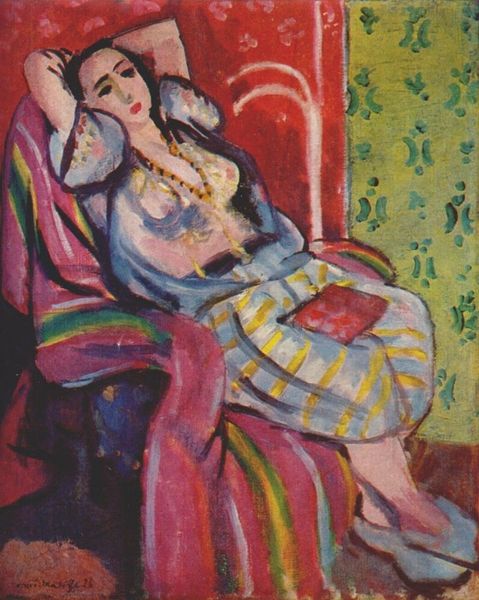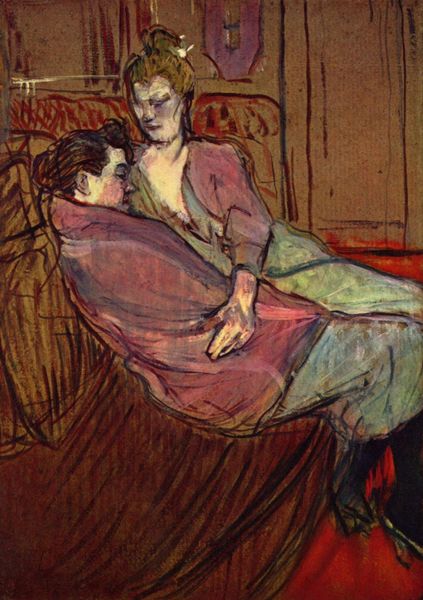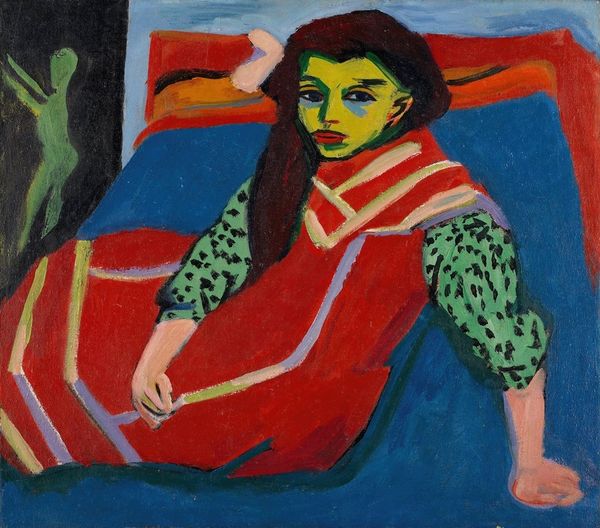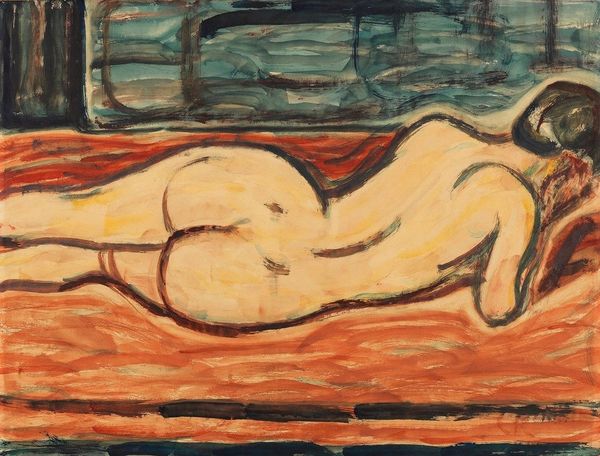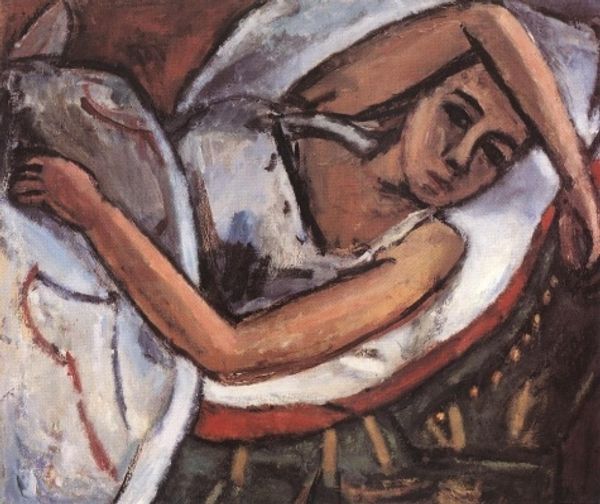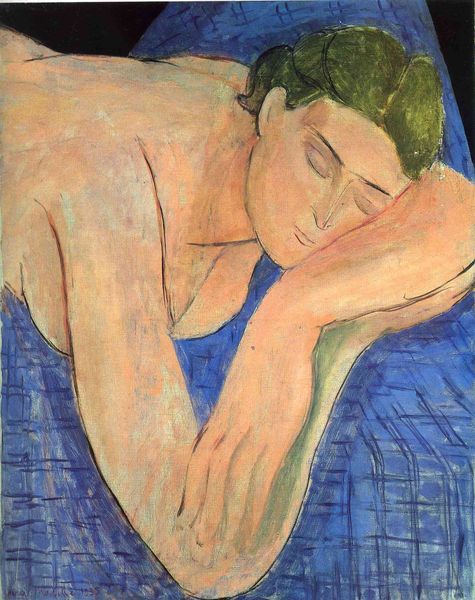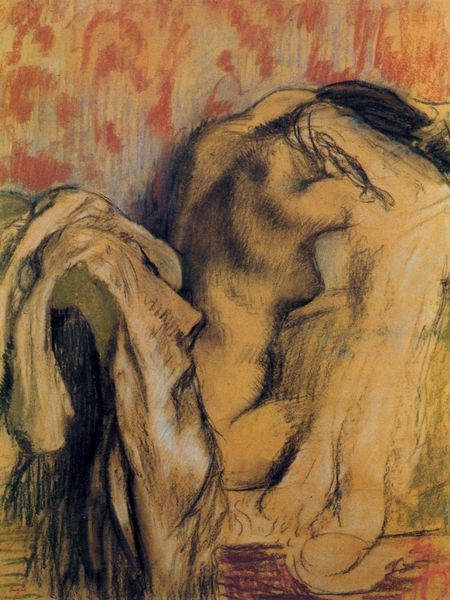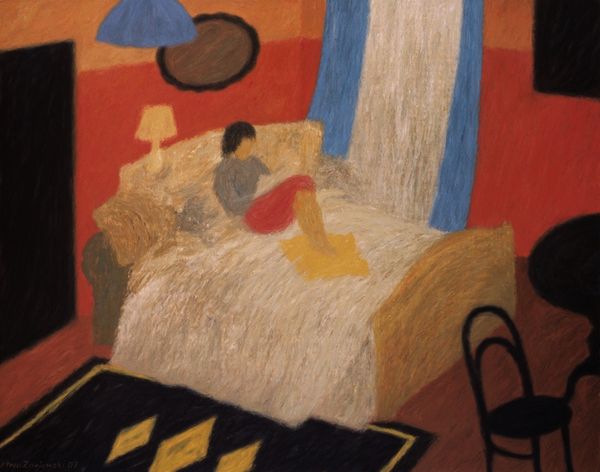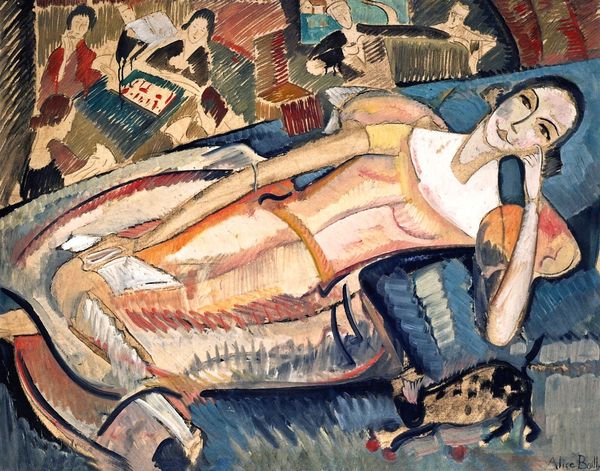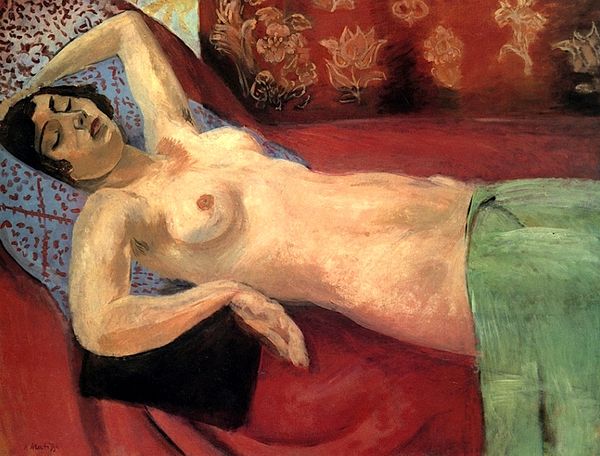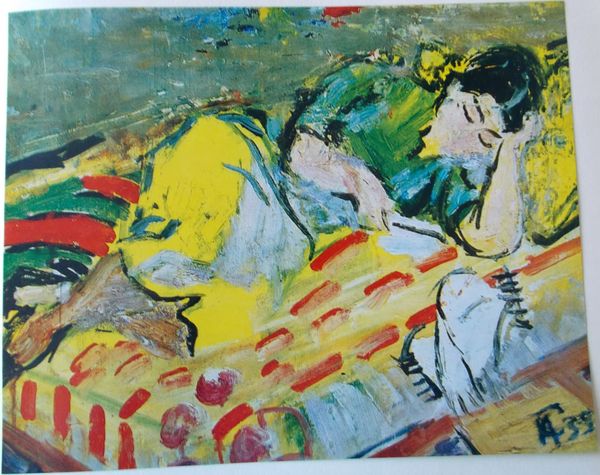
painting, oil-paint, impasto
#
portrait
#
fauvism
#
painting
#
oil-paint
#
german-expressionism
#
figuration
#
form
#
impasto
#
expressionism
#
line
#
nude
#
modernism
#
expressionist
Copyright: Public domain US
Editor: We're looking at Erich Heckel's "Reclining Woman" from 1909, an oil painting that feels immediately striking because of its vibrant, almost clashing, colours. The subject reclines, seemingly lost in thought. What strikes you about this piece? Curator: Well, for me, it’s the audacity of those colours. That electric blue mingling with acid yellow...it's a sensory overload, isn’t it? Heckel throws convention out the window. The very act of applying the paint so thickly, with that gorgeous impasto, becomes as important as the figure itself. What does this image whisper to you, and do you hear the same call? Editor: I definitely feel that energy, it is far from peaceful. It almost feels like an emotional outburst rather than just a simple portrait. Curator: Precisely! Think about the context, too. This is German Expressionism, bubbling up right before the horrors of World War I. Artists were wrestling with feelings too immense to contain. And how does it echo through Heckel’s choice of subject here? A reclining woman, traditionally a symbol of beauty and repose, but presented with such unrestrained…well, truth. Does the truth vibrate, though? It certainly appears to here. What unspoken words do you believe are conveyed from her? Editor: I see tension now that you mention the context, there is so much more depth to this work beyond the first overwhelming feeling! Curator: Exactly, it is this combination of technique, social factors and intimate reflections that create powerful artistic dialogues across the ages. I appreciate your fresh eyes bringing the unspoken to light. Editor: Thanks, this has encouraged me to ask many more questions.
Comments
No comments
Be the first to comment and join the conversation on the ultimate creative platform.
